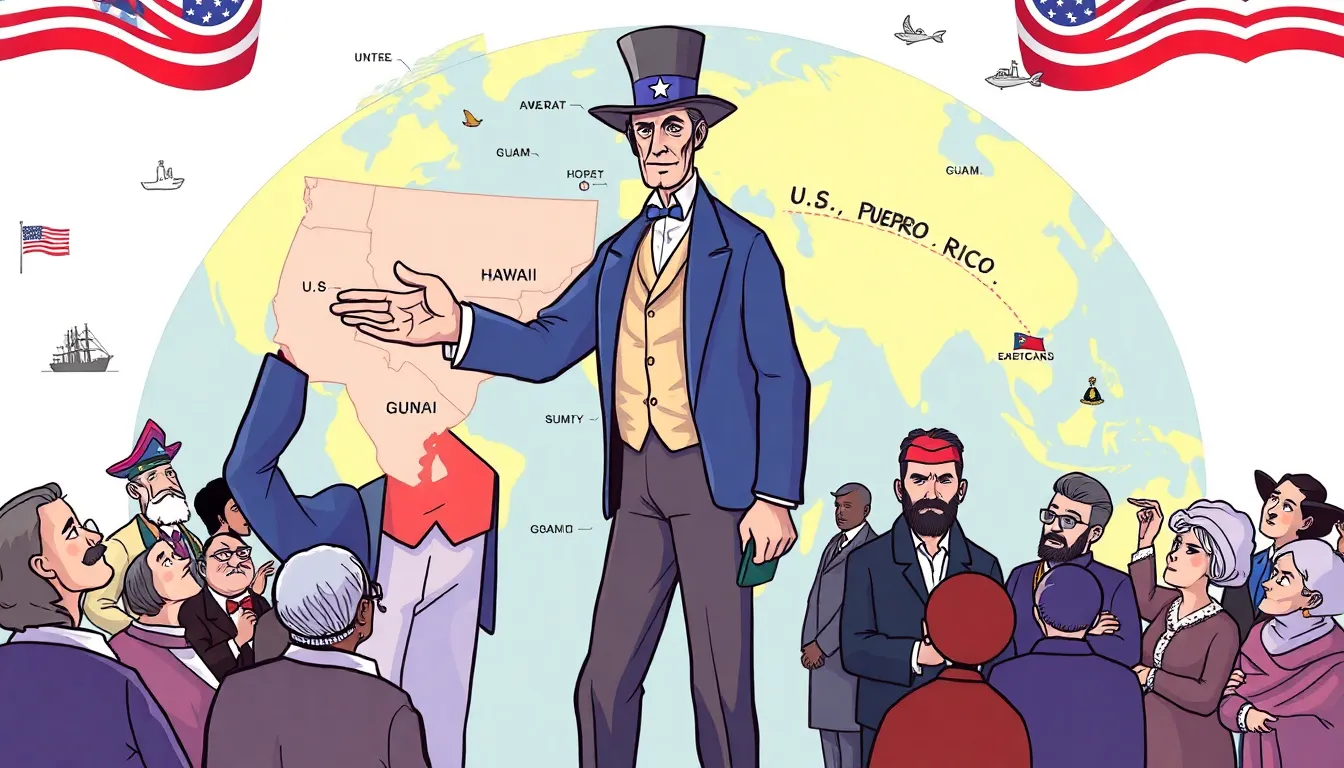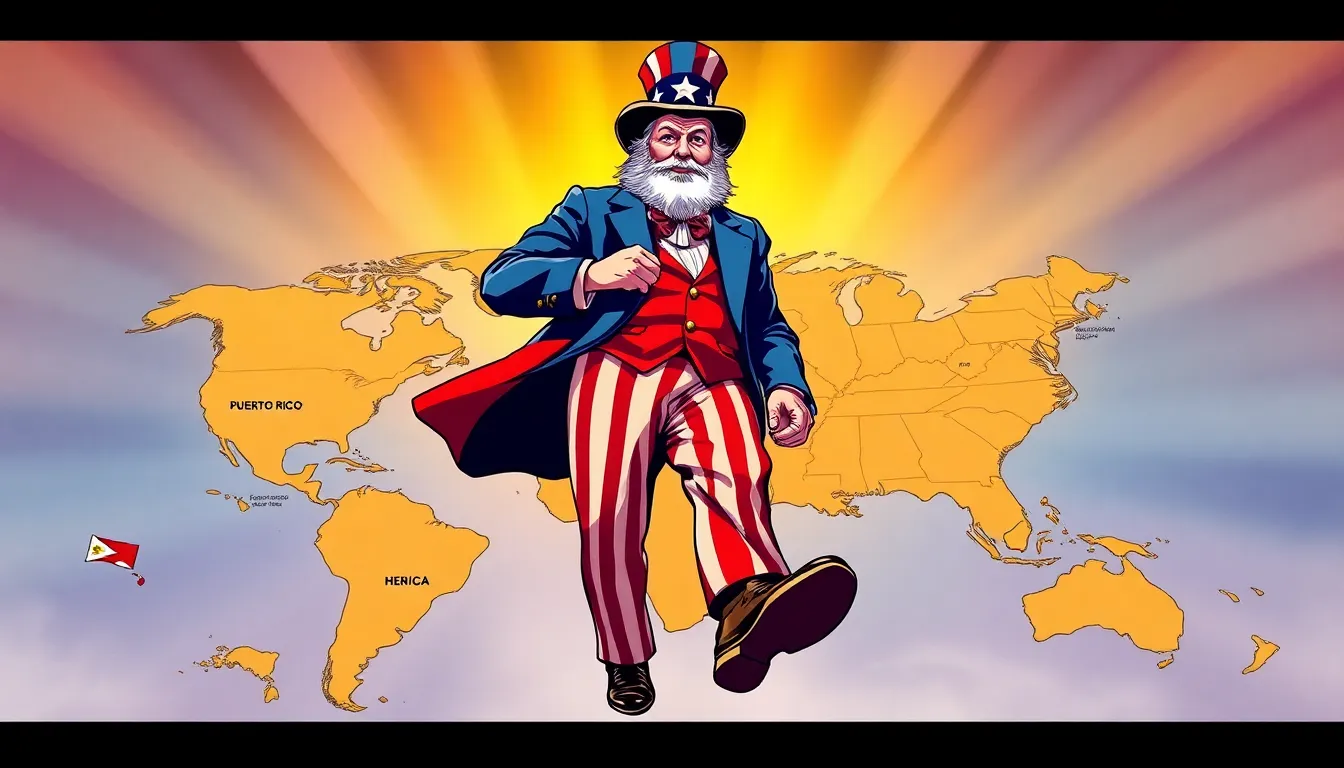Ever wondered how a simple drawing can capture complex diplomatic maneuvers and rivalries? Political cartoons are like the spicy salsa on a taco, they bring out the flavor of history. American imperialism wasn’t just a series of events: it was an era full of strong emotions and bold decisions, and political cartoons served as the comedic yet pointed commentary of the day. Join us on this enlightening journey as we unravel the threads of these historical illustrations, blending humor and insight.
Table of Contents
ToggleUnderstanding American Imperialism

Historical Context of American Imperialism
American imperialism emerged prominently in the late 19th century, characterized by the United States expanding its influence beyond its continental borders. The motivations included economic desires, a need for military superiority, and a cultural belief in manifest destiny. The Spanish-American War in 1898 served as a significant catalyst, marking the first major engagement of the U.S. on a global stage. From the annexation of Hawaii to the acquisition of territories such as Puerto Rico and Guam, this period saw America struggling with its identity as a burgeoning power.
Key Events and Policies
Several key events marked this era. The Open Door Policy, which aimed to ensure equal trading opportunities in China, reflected America’s desire to stake its claim internationally. The Roosevelt Corollary to the Monroe Doctrine emphasized America’s role in policing Latin American nations, showcasing a willingness to intervene militarily. Each of these actions painted a picture: America was not content to stand idly by while the rest of the world expanded.
The Role of Political Cartoons in American Society
Symbolism and Imagery in Political Cartoons
Political cartoons have long served as a vehicle for social and political critique. In the context of American imperialism, these illustrations often utilized satirical imagery and exaggerated characters to convey complex ideas simply. They transformed socio-political reality into an accessible format, allowing even the less informed citizen to engage with significant issues. Uncle Sam emerged as a recurring character, representing American values and, at times, the aggressive nature of imperialism.
Impact on Public Opinion
Through humor and irony, political cartoons captured public sentiment. They sparked debates and engaged audiences in discussions about imperialism, later influencing perceptions. An army of clever illustrations brought clarity to murky policies, sometimes swaying public opinion in favor of or against imperial activities, making them powerful tools in shaping societal views.
Analysis of Notable Political Cartoons
Cartoon 1: The ‘Schooling’ of the Philippines
One notable political cartoon illustrated the U.S. perspective of ‘educating’ the Philippines post-annexation. The depiction emphasized America’s self-view as a benevolent teacher imparting wisdom to an ‘inferior’ culture. While the intention may have been to project a noble effort, this educational symbolism overlooked the sovereignty and feelings of the Filipino people.
Cartoon 2: Uncle Sam as a Colonial Power
Another striking cartoon showcased Uncle Sam adorned in military garb, striding confidently across a world map. This representation symbolized American imperialism’s more aggressive approach. The visual elements played upon themes of power and control, with Uncle Sam indicating a new world order driven by American ideals. The unintended humor in his swagger left a lasting impression, cementing the notion of America’s growing assertiveness on the world stage.
Cartoon 3: The Panama Canal and Imperial Ambitions
The political cartoons depicting the construction of the Panama Canal offer a multifaceted perspective. Some illustrated America overcoming obstacles with sheer willpower, while others critiqued the imperial ambitions that drove the project. By juxtaposing these themes, the cartoons highlighted the complexities of imperialism, showcasing America’s mix of altruism and self-interest.
The Legacy of Political Cartoons in Understanding Imperialism
Influence on Modern Political Discourse
Political cartoons about American imperialism are not just relics of the past. They continue to serve as a framework for analyzing current U.S. foreign policies. By engaging with these illustrations, modern audiences can better understand the cyclical nature of power and critique. Humor, when paired with critique, fosters critical thinking and dialogue even today.
Cartoons as Educational Tools
These notable cartoons provide rich educational resources. They empower educators to teach about complex historical events through accessible narratives. Using humor and imagery, teachers can provoke discussions that go beyond mere facts, encouraging students to understand the underlying motivations and consequences of imperialism.





